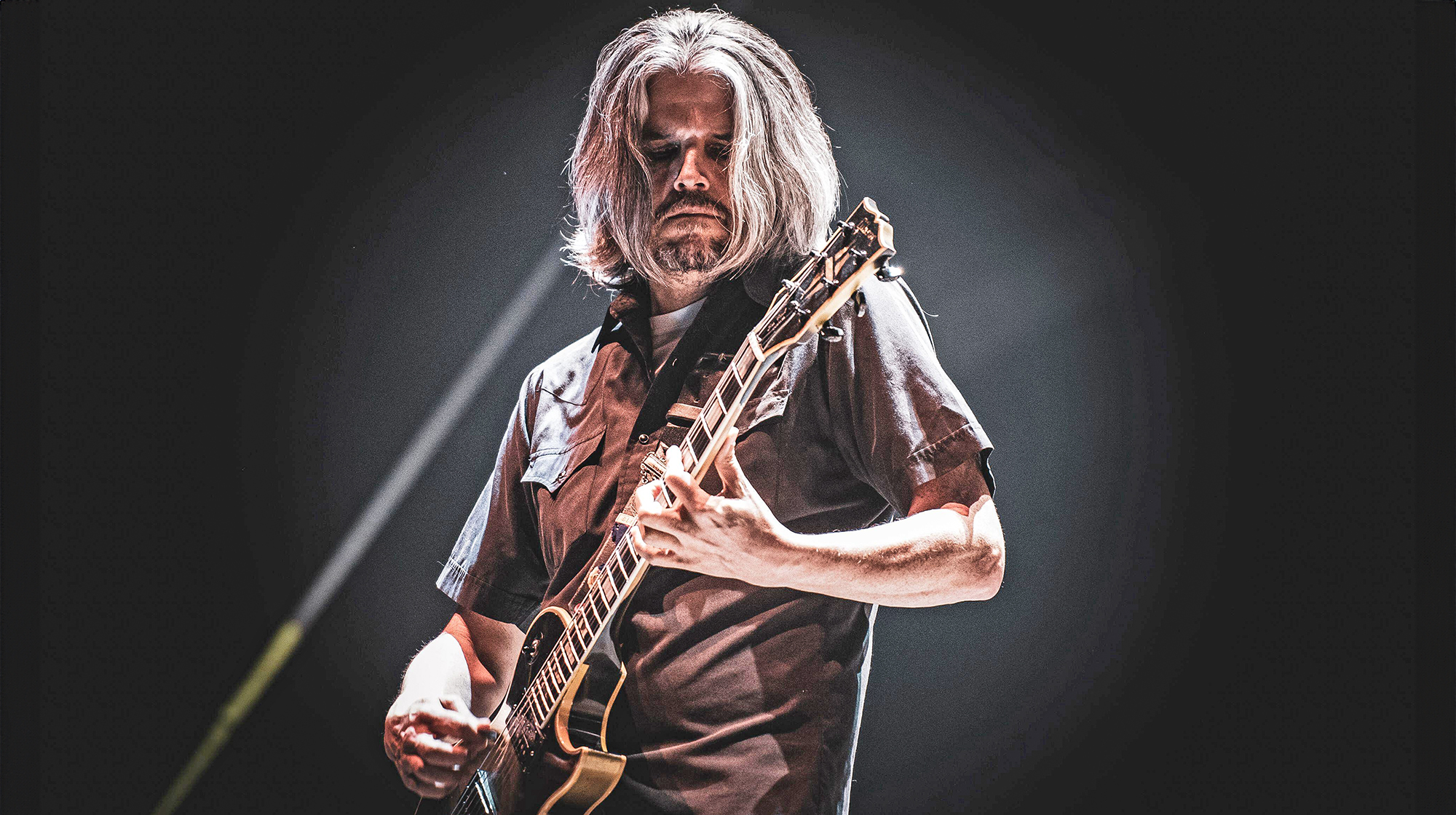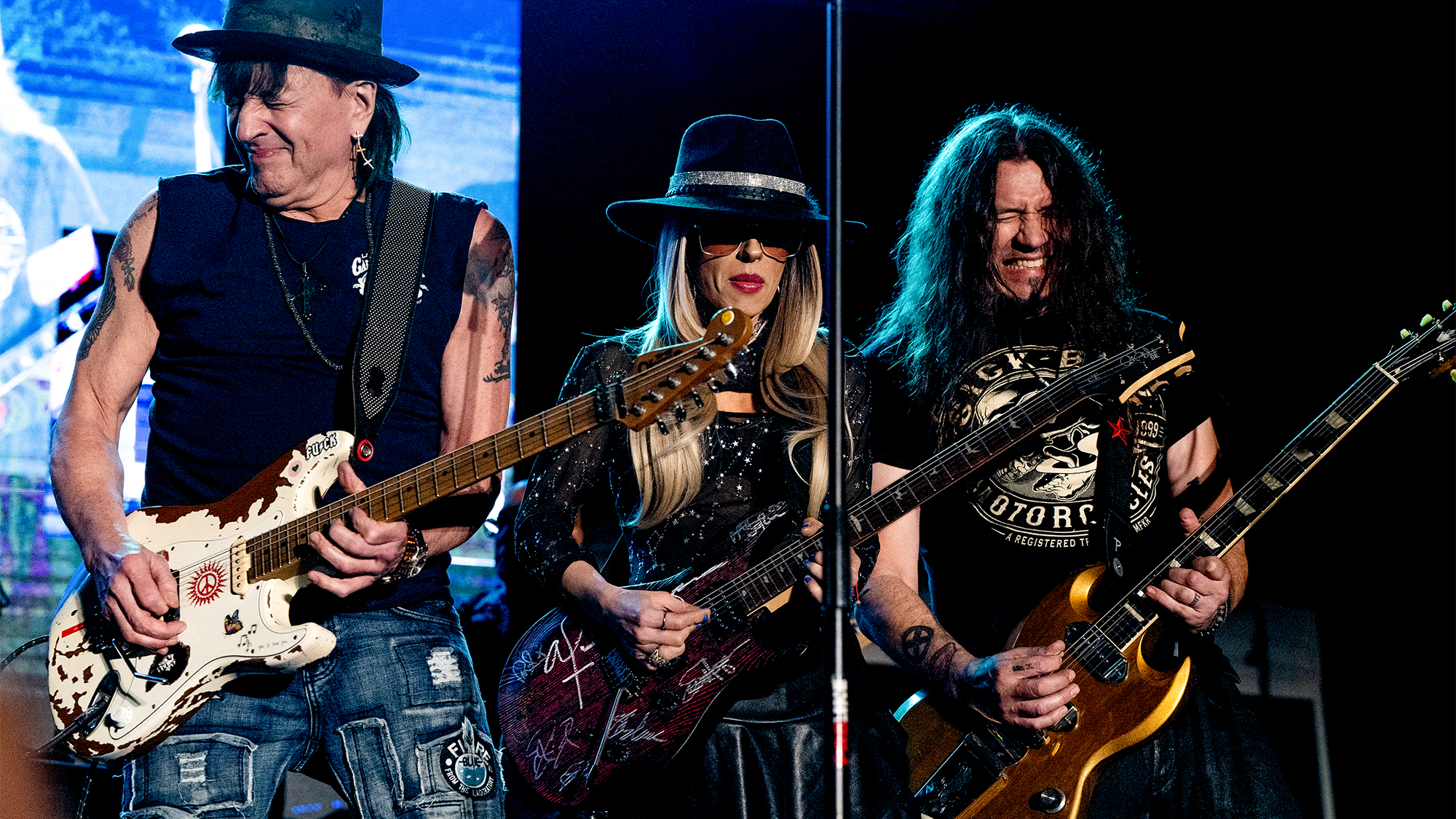“I get a lot of cool sounds out of an Epilady. It uses a spinning wire — almost like a guitar string — to rip the hair off a woman's legs.” Adam Jones on his oddball approach to crafting Tool’s out-of-this-world guitar tones
The guitarist praises Black Sabbath's Tony Iommi for having inspired his own love of drop tunings and evocative tones

“I've never wanted to be a conventional guitarist in any way,” Adam Jones tells Guitar Player. “When I started playing guitar, my heroes were all about riffs, not leads.
“Then I got into more experimental players, such as David Sylvian, Robert Fripp, and Steve Howe. But I also liked Devo and Brian Eno.
“At the time, it seemed like everyone else was playing lead guitar, and I just got sick of it. I never went down that path myself.”
Speaking to the magazine in 2001, shortly after Tool released their groundbreaking and hugely influential album Lateralus, the reclusive guitarist discussed his methods for defying convention, whether by using alternate tunings, or employing unusual devices to create sounds with his guitar that have never been heard before.
“I just do what I do best, which is try to take Tool to the next level,” he said. “I’m always thinking of something new I can add in. I like to do volume swells with delay to create ambient sounds. I'll scrape the strings of my guitar with various things, and I place electronic devices over the pickups to get weird sounds.
“I get a lot of cool sounds out of an Epilady. It uses a spinning wire — almost like a guitar string — to rip the hair off a woman's legs. I place it over the pickups and control the speed of the motor by keeping my thumb on the coil.
“I got the idea from Dave Navarro, who I once saw perform a solo with a vibrator when he was in Jane's Addiction. I thought that was so cool. And then I started listening to German industrial bands like Einsturzende Neubauten, who use crazy stuff on their instruments to take their sound to another place. So I'll buy a bunch of toys, rip the guts out, and use the motors to make some noises.”
All the latest guitar news, interviews, lessons, reviews, deals and more, direct to your inbox!

Remarkably, Jones songwriting craft begins with a staple known to most guitarists: blues scales.
“The best guitar parts I write come from noodling,” he said. “I’ll sit at home watching TV with a guitar in my hands, and just start playing a riff over and over. It's weird. A lot of the stuff I do comes from blues scales.
”My stuff usually starts off as these 4/4 things based on traditional guitar riffs, and then they morph into something that's kind of way out there. But it's good to have a launching point to evolve from.”
A key to his approach is his way of thinking about each song. Rather than dissecting a tune into its various parts — verses, choruses, bridges, solos and breakdowns — Jones thinks of them as a film director might… albeit it a film director who is also a massively talented electric guitar player.
“I think visually when I play guitar,” he reveals. “I look at each song as a little film. I like to start with an opening shot, and then segue into different scenes. I like to drift off in the middle, go somewhere totally unexpected, and then have everything resolve itself in the end. It's a whole experimental journey.”
The best guitar parts I write come from noodling. It's weird. A lot of the stuff I do comes from blues scales.”
— Adam Jones
To create those moods, he’ll often try drop tunings.
“I use drop-D because I like to have an evil tone, and I can get a lot of weird sounds and textures by simply moving my fingers around,” he says. “After I had been playing drop-D for a while, I started doing drop-B, and then, on the song ‘Parabola,’ I tried drop-B/E. It's normal 440 tuning, but the E string is dropped to B and the A string is dropped to E. It's even more evil-sounding than drop-D.”
He says he discovered drop-B/E tuning after recording “Prison Sex,” from the band's 1993 album, Undertow. That song is in drop-B, he says, “and I just wondered how the E would sound next to the low B.”
And while he says “I’ve tried DADGAD and tuning all the strings to the same note,” in the end, “I always go back to the dropped tunings.”
Jones traces his love of drop tunings back to none other than metal’s godfather: Black Sabbath co-founder Tony Iommi.
“It's why I'm obsessed with drop D,” Jones told Guitar World in June 2025. “The stuff he did — the tone, the playing the notes and then pulling off, you know, the open D, or whatever tuning they had that's comparable — it was just haunting, and the riffs were so good. I could play them, but there's a vibe, and it's wonderful. And if you don't hear it in Tool, you probably aren't really into Black Sabbath.”
Jones also credits Iommi’s creative approach to the instrument, which was required after the guitarist injured his fretting fingers in an industrial accident. He subsequently had to craft leather fingertip covers and play a Gibson SG with light strings tuned down a full step and, later, a step and a half. It gave classic Sabbath songs like "Sabbath Bloody Sabbath,” “Faeries Wear Boots” and “Iron Man” their doomy tones. But that quality was also down to Iommi’s unique vision as a guitarist.
“It's his emotion and his approach,” Jones says. “Maybe there's stuff he can do with his handicap that other people can't. It's fascinating. It just goes to those things where there's some stuff they can't teach in school. You have to experience it. You have to feel it. You have to do it on your own. It's nothing that you're gonna learn in a book."
Elizabeth Swann is a devoted follower of prog-folk and has reported on the scene from far-flung places around the globe for Prog, Wired and Popular Mechanics She treasures her collection of rare live Bert Jansch and John Renbourn reel-to-reel recordings and souvenir teaspoons collected from her travels through the Appalachians. When she’s not leaning over her Stella 12-string acoustic, she’s probably bent over her workbench with a soldering iron, modding gear.

